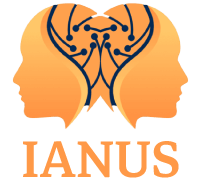In order to better grasp the understanding of Open Science within our project, our partners from RU and EUR shared an open questionnaire within IANUS, aimed at identifying what the members of the IANUS consortium believe constitutes open science, what aspects of open science are possibly underexposed and to which potential areas should be further exploration.
Comprising eight questions, the survey included three Likert scale questions to gauge the level of agreement with various statements, one ranking question to prioritize different aspects of open science, and four open-ended questions designed to insight thorough responses. The survey was distributed among the IANUS consortium, yielding around 13 respondents, with variations in response rates across different questions.
Following this first phase, the results of the survey were discussed collectively within the consortium, covering a wide range of topics, from the definition of Open Science to inclusivity, the dynamic between Open Science and trust, and issues of transparency and skepticism in scientific research. It was discussed that creating a definition for the term Open Science, for example, requires thoughtful consideration, since one made by researchers might not align with the general public’s understanding of what Open Science is and may conflict with definitions already provided by academic institutions or international organizations, such as the European Union (EU). Another concern was that it is important to have a consistent definition or framework that promotes trust in science, in order not to damage one’s relationship with the public and incur in possible miscommunications.
The discussion then transitioned into how the concept of open science is subject to debate. Specifically, what do people mean when they use the term, Open Science? Does it simply mean to provide open access to research papers or is it something broader? For example, promoting diversity and inclusivity, global collaborations, and citizens’ involvement in research, as some mentioned in the survey. One suggestion was to develop multiple dynamic definitions tailored to specific needs and contexts. Another idea discussed was how the Open Science definition is possibly ever-evolving with new technological developments and a changing social climate. Perhaps, establishing a framework of dynamic personalized definitions would support this ever-evolving nature.
Some responses from the survey also raised the issue of inclusivity as an overlooked topic. Should inclusivity be considered a part of open science? This would raise important points about who is included, how diverse voices are represented in scientific research, and how this affects the definition of open science.
A significant point of discussion was also centred around the balance between transparency and comprehensibility in open science research. Highly transparent information that is not easily understandable can be as problematic as a lack of transparency. For example, if an open research paper contains subject-specific jargon or is written in a highly academic style, a common person may not be able to understand the content of the research. This could lead to disinterest, fatigue, or distrust in important scientific research that is presented to the public. The issue of open-access papers led to a broader conversation about the importance of effective communication channels to ensure that information is not just accessible but also useful and understood by the public.
Finally, Trust and skepticism in open science were also key topics. It is crucial to understand skepticism in science and the aspects contributing to distrust in scientific research. The discussion also addressed what constitutes trust in science, including the reputation of the researcher, the credibility of the journal, the research methods, and the reliability of the publisher. Furthermore, the framing of scientific information was also agreed as an important factor in promoting public trust in science, with the presentation of findings significantly affecting the confidence level. This was related to the concepts of transparency and community engagement, as it was discussed that creating an appropriate communication channel to present Scientific information was important.
The Open Science survey provided valuable insights into how the term Open Science extends past open-access journals to include more varied elements. Additionally, the discussion following the survey delves deeper into these insights, highlighting key topics and concerns. These responses and the ensuing conversations will guide IANUS’ efforts to implement the discussion about open science principles in our work.
